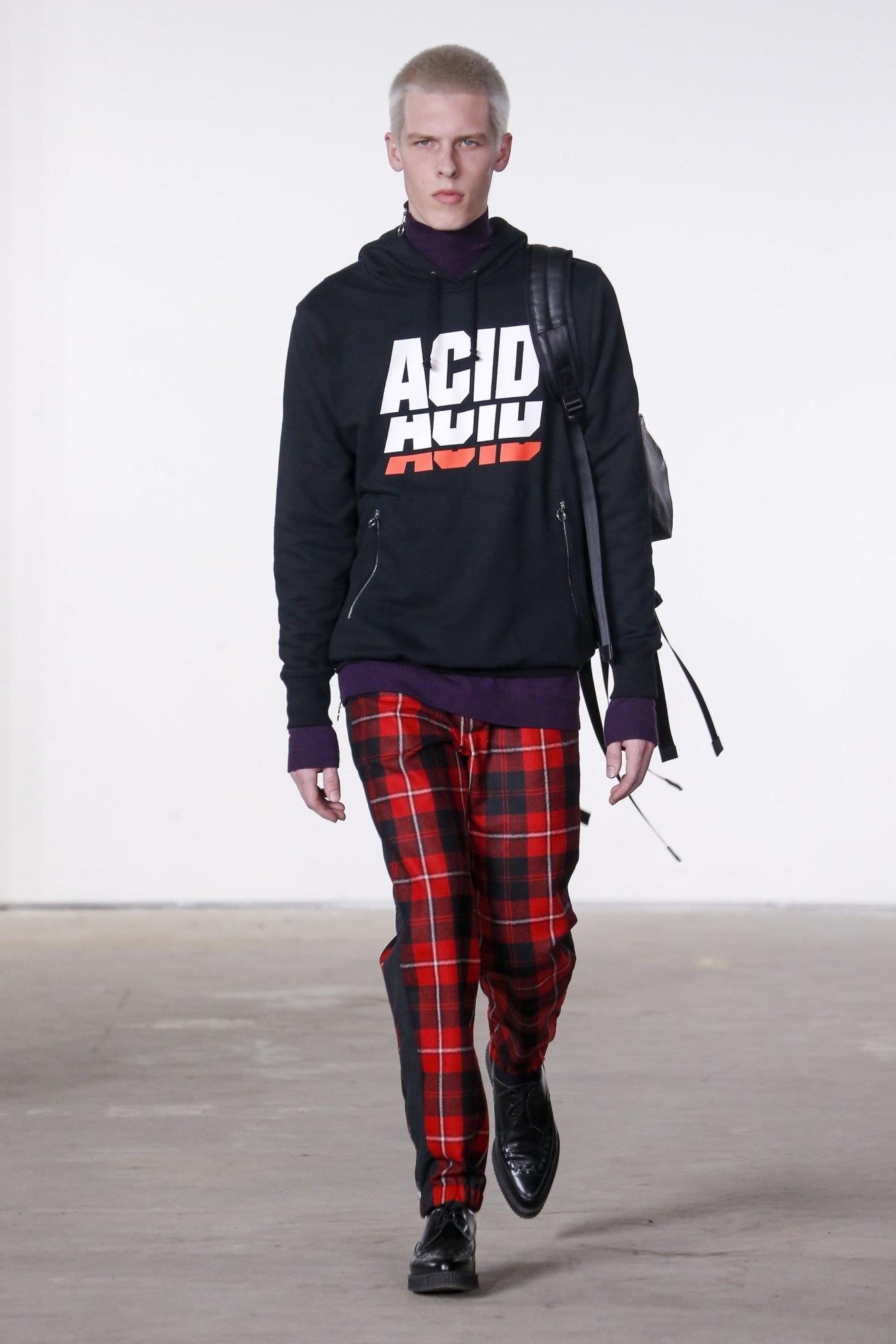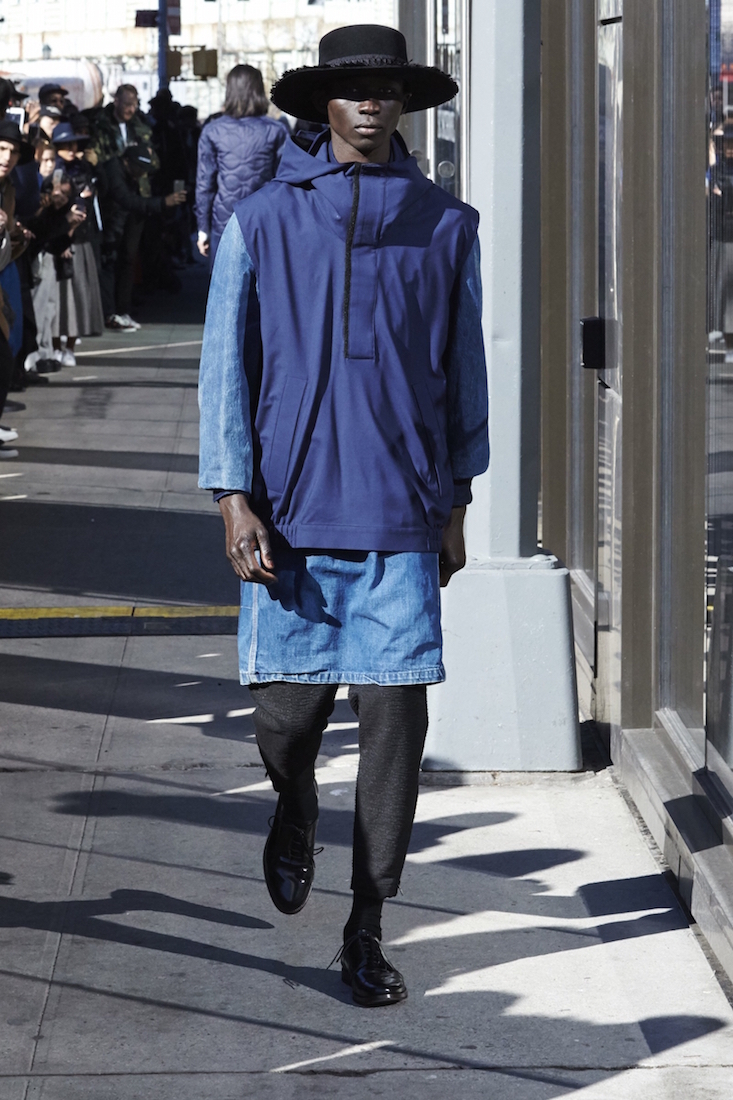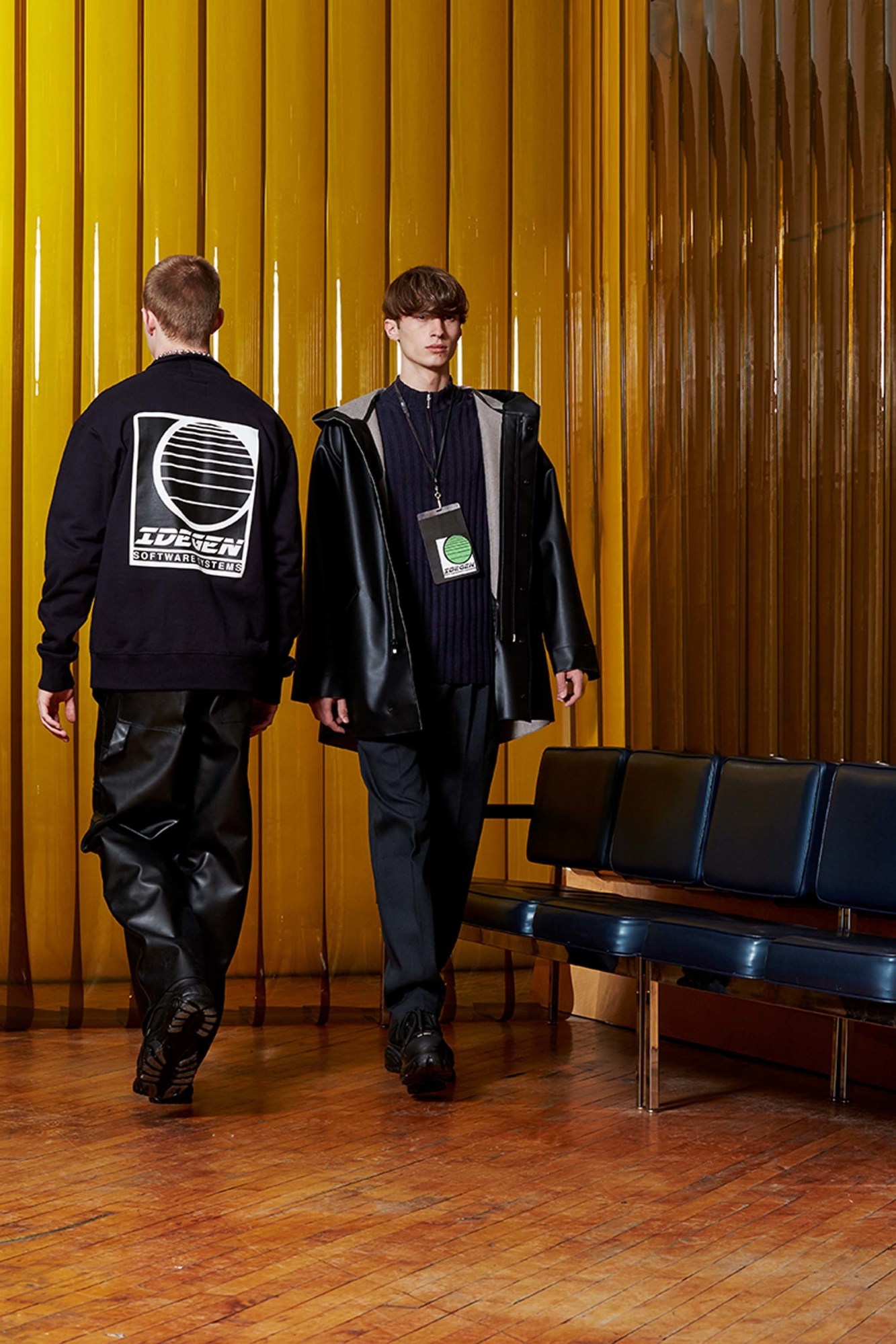For years, New York men’s fashion has been synonymous with plaid shirts worn under tweed jackets, and suspenders accenting oilcloth cotton coats, all on top of a pair of heavy work boots. It’s a look that launched many a brand, filled many a store, and dressed many of the streets’ most savvy and stylish. But the look, studiously and at times cloyingly steeped in notions of heritage and antiquity, has been on the decline. And now it seems its death knell has been sounded, as NYFW: Men’s fall/winter 16 marks its final end. May it rest in peace.
This show season, designers traded in the façade of authenticity for a darker, more urban, more modern look, underscored and made more vivid by the realities of life today. Could it be a sign of a new American identity? Could it be the fashion equivalent of a gag reflex to the possibility of Donald Trump taking the White House? Or was it simply time to move on? In a season characterized by a gloomier mood and a step into the shadows, New York menswear shined.
Patrik Ervell started his label back when the heritage trend was in its infancy. And unlike many brands founded during that time (Band of Outsiders, Loden Dager, Obedient Sons) he is still around. For the last few seasons Ervell has drifted away from a look that once defined his brand: a minimalist take on American classics, streamlined and nuanced with subtle shifts in proportions and details. He’s instead made an appeal to the street, referencing 90s youth culture, proposing wide-cut trousers, oversized jackets, and graphic sweatshirts that wear far better with Raf Simons and Vetements than they do with Brooks Brothers or Ralph Lauren.
Tim Coppens, on the other hand, has always served as a beacon of stringent modernity. A former design director for Ralph Lauren’s RLX, Coppens has defined a unique language of technical fabrics, zips, and fabric piecing. This season his modernist take on American pragmatism sported subcultural undertones. Though he showed a plaid, the effect was more Westwood than Wild West while a sweatshirt with the world “Acid” repeated on the front was perhaps a nod to Belgian Newbeat and the acid house music that dominated Northern Europe’s underground clubs in the early 90s.

A sense of macabre has always been threaded throughout the clothes of Siki Im. This season, Im indulged in the look of the damned, as observed from a variety of vampire films. His riff on Nosferatu, and other undead, resulted in floor-sweeping fluid-cut trousers trimmed in leather, sweatshirts featuring the Bauhaus face icon, and models with black blood dripping from their mouths. If darkness was the theme of the season, Im’s collection was its twilight extreme.
The Japanese are known for doing Americana better than even the Americans (it’s why you’ll find quite a few Ralph Lauren designers scurrying about Tokyo for inspiration), so when its biggest purveyors of American realness, Daisuke Obana of cult label N.Hoolywood, switches gears and cleans up his act you definitely have to raise an eyebrow. Inspired by extreme conditions and high-performance clothing designed for an urban context, Obana’s vision echoed the overcast moods of Blade Runner. Minimal, vaguely futuristic, gloomy, and angst-ridden by way of his streetcast teens, the collection cemented his retraction from the American-centric looks that he founded his brand on.
Shimon and Arial Ovadia became the default poster boys of American heritage when Band of Outsiders’ Scott Sternberg could no longer fulfill the role. (The pair also designs a line for staid American clothier J.Press.) So it was a telltale sign that even they made a departure into darker territories with their show for Ovadia and Sons, eschewing their usual cheery Americana for a creeping macabre aesthetic worthy of Edgar Allen Poe.

The show to watch this week was without a doubt Public School, by Dao-Yi Chow and Maxwell Osbourne, the new creative directors of DKNY. They, along with Hood By Air’s Shayne Oliver, have hurried along New York fashion’s move away from heritage. Inspired by the late David Bowie and his seminal film The Man Who Fell to Earth, the pair continued with their post-modern ruralization of the New York streets, blending notions of monastic Amish dress with streetwear. It’s a poetic take on urban dressing that has quickly become their trademark.
Maybe it was due to persistence and talent, maybe it was the fact that he served as a design consultant for Yeezy, but Robert Geller was the sleeper hit of the week. For years, the designer has shown his brooding Weimarian romance, unadulterated and unswerving, but this season all the editors, buyers, and show attendees seemed to take notice. Geller’s distinct carrot-leg pants, historicist updates, deep hues of burnt umber, ocher, and sienna resonated like never before. His work is a fantasy rooted in reality which is why his vision is so alluring. It’s attainable. You can wear it. Geller’s collection offered the fine balance of ease and escape that perfectly sums up the mood of American menswear today.
Credits
Text Jeremy Lewis
